Ancient and classical culture have left such profound and indelible traces in Sicily that no other civilization or domination that has taken place in the course of history has ever succeeded in erasing or making people forget. The ancient historical accounts, often seasoned with legendary aspects and geographical inaccuracies, have helped to enrich the mythical aura that surrounds the island. So
Hybla, legendary city-state of the Sicilian king
Hyblon, proud opponent of the Greek Syracuse, is today sought by Paternò in Ragusa, from Piazza Armerina to Pantalica, in relation to clues historical and archaeological. For example, Thucydides (460 a.C.-404 a.C.) mentions three distinct cities; instead, Herodotus (484 BC-430 BC) and Tito Livio (59 BC-17) speak of a single Hybla. It is historically probable that several "Hybla" in the eastern part of the island have cyclically risen, fallen into ruin (or destroyed by the invaders) and rebuilt over the centuries between the advent of Šekeleš (population of hypothetical Anatolian origin, in conflict with the Egyptians), presumed colonizers of the eastern part of Sicily, then called
Sicani, and the Romans. So it's no coincidence if
Macrobius (384-480),
has probably made confusion and inverted Lilibeo leader with Pachino leader , persevering in the error of the Greek Pausanias (110-180), writing that when the
Libici (the Carthaginians), invaded the promontory of Pachino, the inhabitants of
Mozia, invoked the help of
Apollo who, listening to their prayers, sent a pestilence to the invaders.
The facts narrated probably concern the third Greek-Punic war, with the Phoenician colony temporarily in the hands of the Greeks of Syracuse. Thus, according to
Cluverio (1580-1622), the
pachinesi (Greek alias of Mozia) built and dedicated a temple to
Apolline Libistino (ie Apollo the Libyan). Well, despite the historical and geographical defect, in the territory of Pachino, of temples dedicated to Apollo,
god of wisdom, they were actually built, as evidenced for example the probable vestiges in
Contrada Cugni.
After the fall of the Western Roman Empire, it was the Christian Byzantium who tore Sicily from the Goths, and brought classical culture back to the island. Between Vendicari and Capo Passero were erected several
trigone, a particular type of Byzantine church, often on the remains of Greek temples.
 Triona
Triona (from
trigona) is the district where the Sophia Agricamping is located. Among the old people of Pachino it was said that once, in a neighboring district called
Fondo San Pietro, there stood a small Greek temple on whose remains was built a
trigona, dedicated probably in San Pietro (hence the name of the district).
In any case, roughly in the San Lorenzo district, about a kilometer as the crow flies from the campsite, a structure with strong similarities to the Byzantine architecture of the Trigona di Vendicari is clearly visible, in an evident state of abandonment. Too bad, but the Italian law on this, as we shall see, does not help.

In short, we are immersed in a territory that is full of archaeological wealth, of historical references: it seemed natural to call attention to that Greek culture that for centuries has impregnated in every stone, in every clod of earth, calling our structure
Sophia. And certainly we are pleased to be able to visit for free the
Villa Romana del Tellaro, very bitter in the mouth when we are told that the entry would be
free because when it was paid some idiot came to claim the lace. We hope that it is a sonorous sound, an unfounded voice of corridor... In any case it is an archaeological site, which is coupled with the most famous Villa Romana del Casale, run mostly by volunteers, without funds, which tells that when the sirocco blows a bit 'more than usual, sometimes a mosaic tile, after a nice flight, is lost in the surrounding countryside. Unfortunately, the negligence is a common trait from Palazzolo to Noto Antica: little would be enough, but at the same time that it is said that in particular in Sicily we could live on tourism, it is also said that funds are lacking. A bit like when a dog bites its own tail. In the archaeological site of Eloro, within the reserve of Vendicari, beyond the umpteenth testimony of how pleasant it was for the Greeks to found colonies on the eastern coast of Sicily, you can also observe how the tombaroli are busy looting the lootable even equipped with
scrapers.

A ray of sun breaks through the bleak sky of "the way things go" when looking for information on the archaeological area of Cugni, we discover that a group of kids under the aegis of
Movimento Cittadino "Yes to the Archaeological Park of the Cugni" has tried to move the conscience on the umbiloldisecurable (euphemistically) semiabbandonato, when certain Paleolithic caves, like that of
Calafarina are not used for illegal brick landfills. There are many archaeological finds that
Paolo Orsi "saved" from Contrada Cugni to the homonymous museum of Syracuse.
We heard of some farmers in the area, who plowed the land and came across archaeological finds that were quick to cover or hide. After an initial blameworthy judgment for such behavior, easily attributable to ignorance and cultural insensitivity, we deepened the question by discovering that
the Italian law does not help.
In fact for the Italian law, not only all that is found belongs entirely to the State, but who finds an archaeological find has the obligation to assure its integrity and report it immediately to the police or to the supervisory authority. A
discovery prize is foreseen for the finder and for the owner of the land where the find was found, amounting to a quarter of the value estimated by the Superintendent. However, the practice is a bit 'different and also generates hasty poured concrete, the proliferation of the black market of Triads Capitoline and, when all right, an elegant furnishings of the living room of the finder... In fact, the finder must not only prove the randomness of the find, but if this find happens during the construction of your house or while you are plowing your land, the Superintendence can (rightfully...) block any activity in the building where the discovery was made in order to make new excavations and insights. To aggravate the situation is the frequent underestimation of the value of the findings and of the indemnities in case of eventual
expropriation of properties by the Superintendency. Obviously it is theoretically just and very beautiful that the State protects its archaeological heritage, but on the other side of the barricade there are people who could find themselves strongly damaged by a find. Urgent solutions are urgent.
A solution to this hemorrhaging of archaeological resources could be the involvement of property owners in the management of sites and findings for tourism purposes. In other words, if I found a Greek temple in my camping, I would be very happy to take care of it and share the resulting income with the State. However considering the possibility of expropriation, I would think about it several times before denouncing the find: cast the first stone who would have no doubts about it...
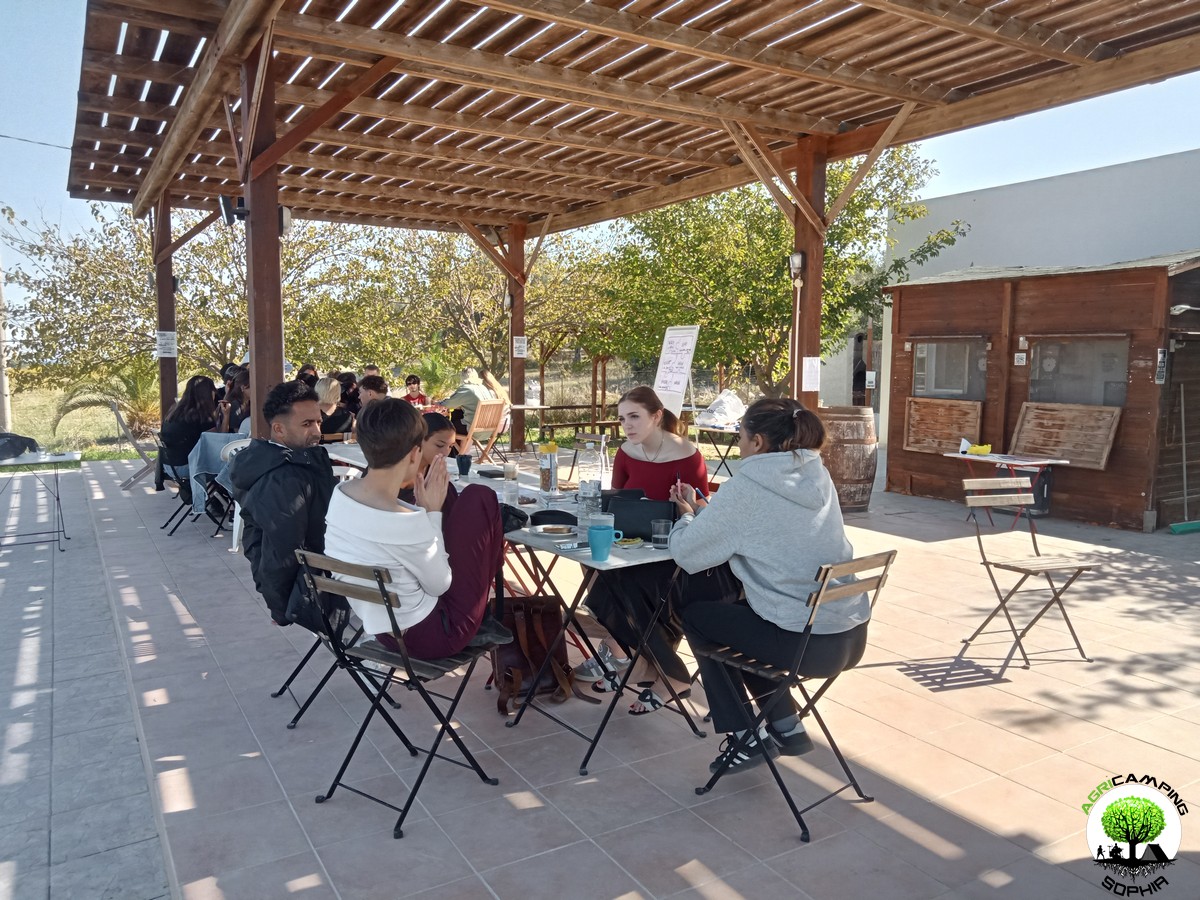 DO YOU WANT TO ORGANIZE AN ERASMUS AT AGRICAMPING SOPHIA?
DO YOU WANT TO ORGANIZE AN ERASMUS AT AGRICAMPING SOPHIA?
WHAT IS AGRICAMPING SOPHIA?
It is a campsite with tent pitches, glamping tents, mobile homes and bungalows
WHERE IS IT?
In Italy, in Sicily, near Syracuse, in Pachino: 36.736883, 15.095610
HOW TO CONTACT US?
info@agricampingsophia.it
(SPEAK ENGLISH) +39 3473079242 – (ONLY SPEAK ITALIAN) +39 3452396095
WHAT DO WE OFFER?
We offer hospitality and catering for Erasmus projects
FOR HOW MANY PEOPLE?
We can have 4-7 single beds in the Socrate Bungalow, 6-10 single beds in the Platone Mobile Homes, 4-6 single beds in the Aristotele Mobile Homes, 4 single beds in the Iblone Mobile Homes, 4 single beds in the single beds in the Empedocle Glamping Tents. In total we therefore have 18 comfortable single places or 31 single places with a fair spirit of adaptation.
IN WHICH PERIOD CAN AGRICAMPING SOPHIA BE AVAILABLE?
The most suitable periods to use our services...
 CART RUTS MODELED ON SOFT ROCK?
CART RUTS MODELED ON SOFT ROCK?
Read also RACK OR HOUSING FOR CLOGS?
Some cart ruts from the Targia district, in Syracuse, and most of the cart ruts from Granatari Vecchi, in Rosolini, give the impression of having been impressed, modelled, on a rock that was originally viscous, not entirely solid. As absurd as this hypothesis may seem, especially in Granatari Vecchi, the softness of the shapes and the at least anomalous uniformity of the rock bank, as if it were a concrete casting, which hosts the cart ruts, is unicum compared to the lithic context in the area.
In Targia this phenomenon is less impressive but if we consider the cart ruts essentially cart tracks, therefore furrowed roads indirectly resulting from the repeated passage of carts along the same route, we do not understand why such uniformity and smoothness is present, in the majority of cases, also on the parts not affected by the passage of the...
 RACK OR HOUSING FOR CLOGS?
RACK OR HOUSING FOR CLOGS?
Read also CART RUTS CUT FROM QUARRIES
In the presence of slopes, even slight ones, in some cart ruts in the Targia district, in Syracuse, central holes are found with a diameter of between 30 and 50 centimeters and a depth of 15-20 centimeters, spaced about 50 centimeters apart. Neither the position (they are not exactly in the center of the cart ruts and perfectly aligned with each other), nor the shape appear perfectly regular: either the passage of time and any wear have profoundly modified their original shape or, simply, they have never had a systematic regularity. However, the offset in position between one hole and another is never completely “off-axis”: there is always a portion about twenty centimeters wide that coincides with the same portion of the previous and subsequent hole. The best preserved and most defined holes are found in the cart ruts usually called Scala...
 CART RUTS CUT FROM QUARRIES
CART RUTS CUT FROM QUARRIES
Back to CART RUTS AND A FEW TOO MANY PROJECTIONS
I will skip any preamble, referring to what has already been written regarding the presence of cart ruts in south-eastern Sicily.
The easy academic tendency has been, in most cases concerning cart ruts, to consider them in terms of the latomie, or quarries, with which very often (for example in the cases of the Targia or Pizzuta districts) they share the same territory.
According to this theory, the carraie would have been indirectly created due to the wear of the rock at each passage of carts or sleds loaded with extracted stone blocks. I will not repeat the arguments presented so far in order to demonstrate that this is a theory that has little solid foundations on an in-depth analysis of the cart ruts. However, I will add a piece by demonstrating the implausibility of a connection between them in both chronological and functional...
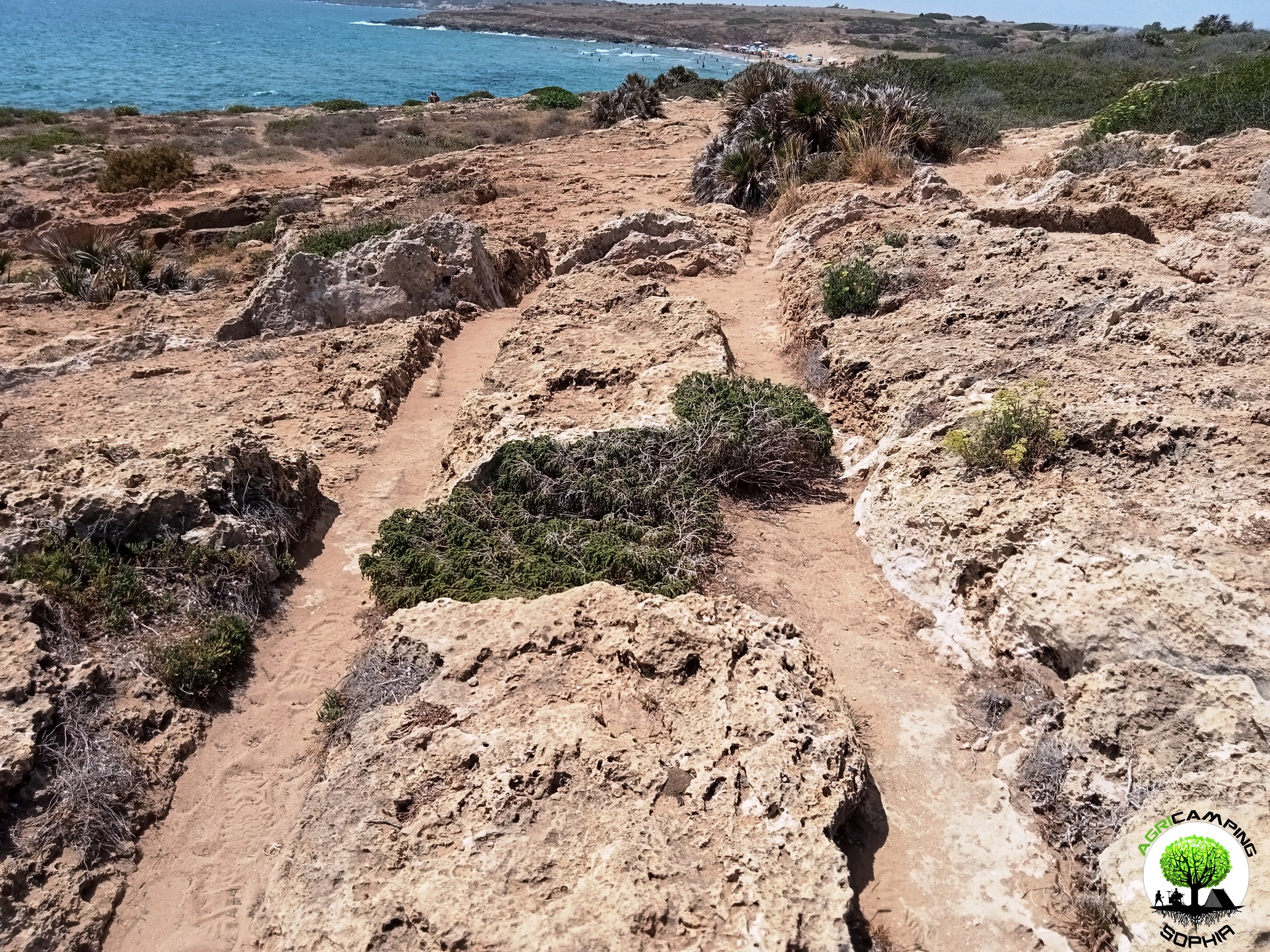 CART RUTS AND A FEW TOO MANY PROJECTIONS
CART RUTS AND A FEW TOO MANY PROJECTIONS
Read also THE POLISHING OF THE CART RUTS
I will skip any preamble, referring to to what has already been written regarding the presence of cart ruts in south-eastern Sicily.Considering the possibility that the cart ruts were gradually dug by the passage of carts pulled by pack animals, for example pairs of oxen, observing certain sections of the cart ruts present in the Granatari Vecchi district, in Rosolini, and in the Pizzuta district, close to the Vendicari Reserve, two questions arise:
1. Why force the animals to pass over rough surfaces and protrusions high, compared to the base of the furrows, even 60-70 centimeters?
2. Why, in the presence of such obstacles, not opt for a detour?
For Mottershead, Pearson and Schaefer such protrusions appeared later, since at the time of the passage of the wagons, a layer of earth covered the rocky bank, thus not making the obstacle...
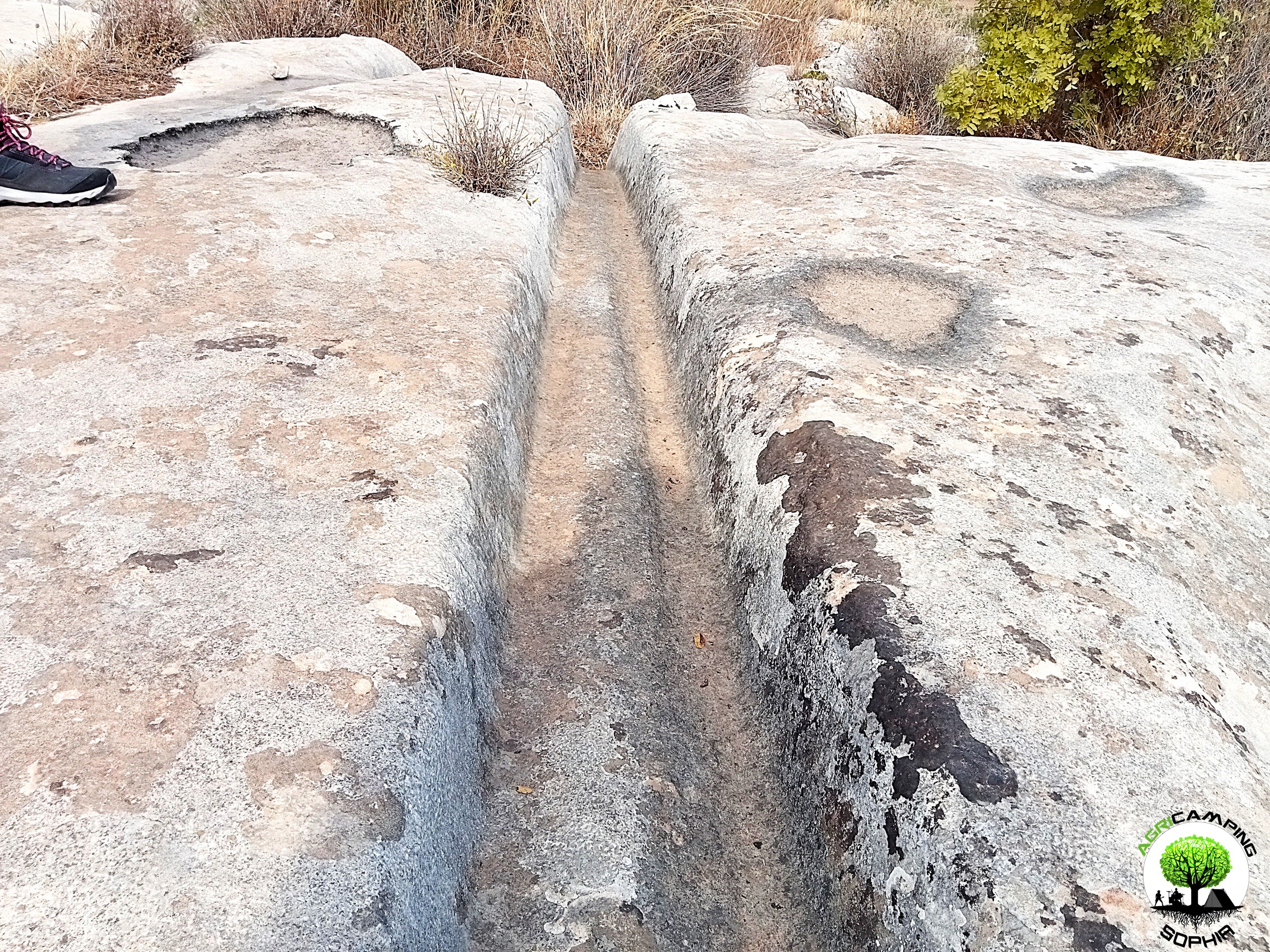 THE POLISHING OF THE CART RUTS
THE POLISHING OF THE CART RUTS
Read also THE PROBLEMATIC EDGES OF THE CART RUTS
I will skip any preamble, referring to to what has already been written regarding the presence of cart ruts in south-eastern Sicily.
To proceed with this comparison I have chosen a probable capital and the corner of a recess present in a block of the northern walls of Eloro that would seem to resemble a pinax, that is, a niche that would have housed a fresco of the heroa, but which a more careful observation refers to a system functional to the grip of the block through a pincer winch. Both elements, like the curt ruts, have remained at the mercy of the elements for millennia, and are therefore subject to comparable wear and tear due to the passage of time. The finishing of the capital should be of a high standard, since it is an architectural element that also has an aesthetic function. The recess, on the other hand, should have...
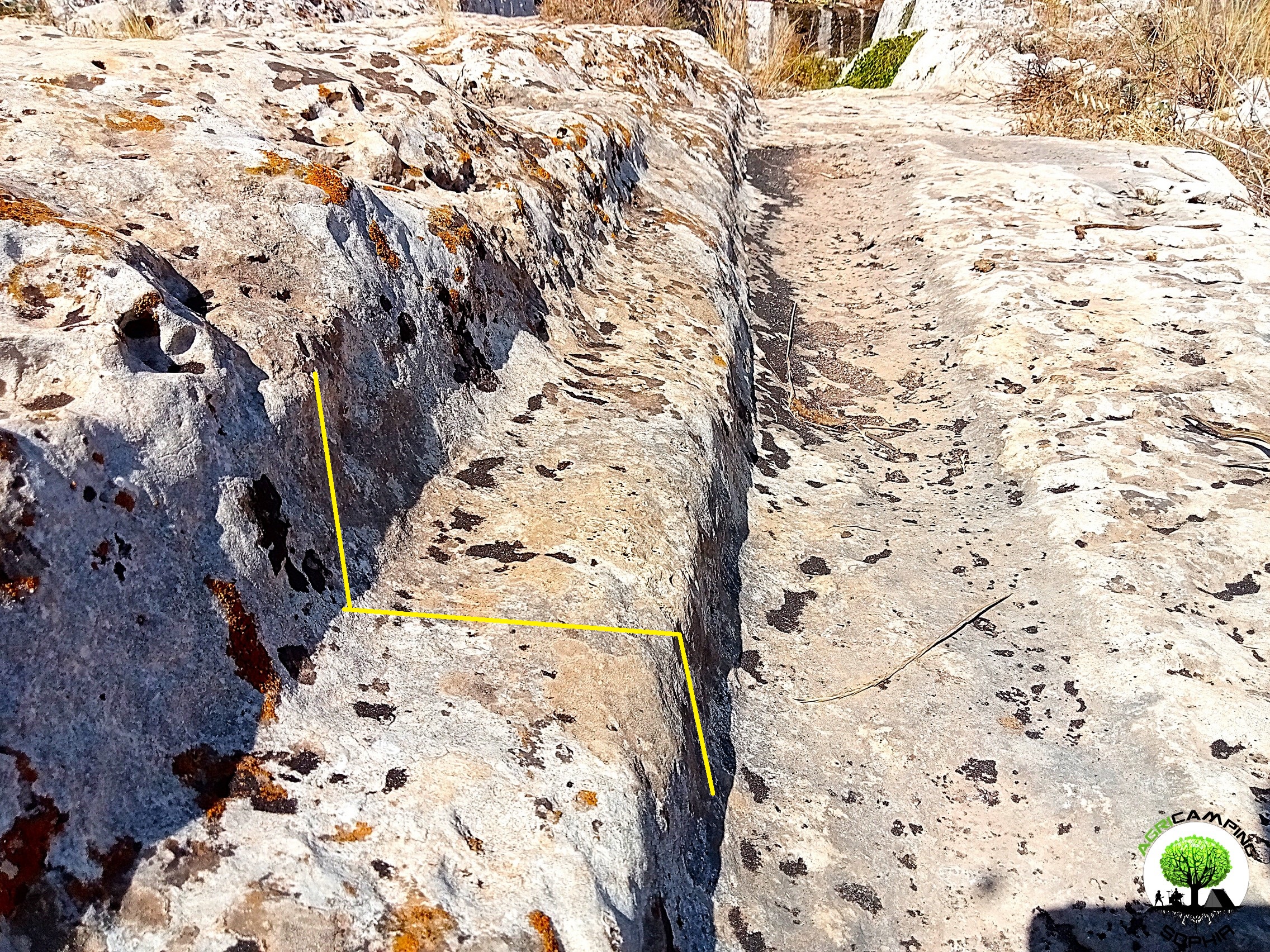 THE PROBLEMATIC EDGES OF THE CART RUTS
THE PROBLEMATIC EDGES OF THE CART RUTS
I will skip any preamble, referring to to what has already been written regarding the presence of cart ruts in south-eastern Sicily.As can be seen in other sites around the world, in some cart ruts I visited, in particular in the Cugni district in Pachino, in the Granati Vecchi district in Rosolini and in the Targia district in Syracuse, a clear border can be seen, a sort of frame, next to the grooves, more marked externally, barely noticeable internally.
The borders I measured have a width of 14-20 centimeters and a height of 8-10 centimeters.
Not all cart ruts have such frames present or particularly evident, regardless of the degree of wear or degradation. They are found above all in cart ruts with less deep grooves.
As already described in detail, given the presence of furrows with a depth of even 65-70 centimeters, the wheels of a possible vehicle would have had to have a...
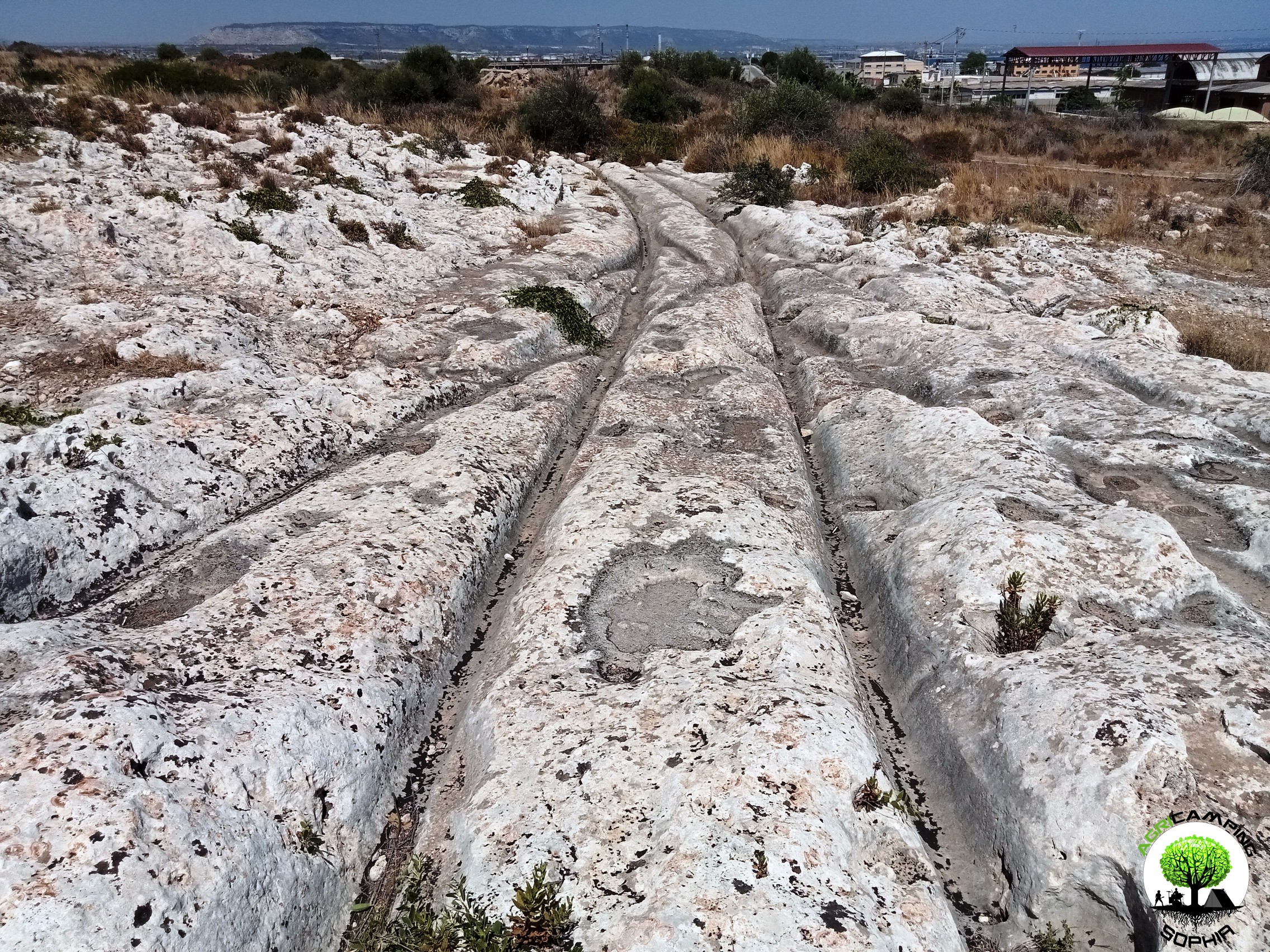 THE PROBLEM OF CART RUTS IN SOUTH-EASTERN SICILY (PART FOUR)
THE PROBLEM OF CART RUTS IN SOUTH-EASTERN SICILY (PART FOUR)
Click here to return to third part
Clapham Junction
As in the Maltese site Misrah Ghar Il-Kbir, also in the Targia and Granatari Vecchi districts the cart ruts intersect and cross each other in a similar way to the track switches in a railway station. The nickname Clapham Junction that was given by David H. Trump to the Maltese site, derives precisely from the similarity with the famous English railway station. For Sagona these are agricultural furrows and water channels, for Mottershead, Pearson and Schaefer these are abandoned paths due to obstacles and wear. Obviously we do not know what the morphology of the Syracuse and Rosolini territory was at times when the cart ruts were traced, but considering the current context, there certainly would have been no agricultural reason to build them, given the presence of fertile land, springs and fresh water courses just a few kilometers...






 DO YOU WANT TO ORGANIZE AN ERASMUS AT AGRICAMPING SOPHIA?
DO YOU WANT TO ORGANIZE AN ERASMUS AT AGRICAMPING SOPHIA? CART RUTS MODELED ON SOFT ROCK?
CART RUTS MODELED ON SOFT ROCK? RACK OR HOUSING FOR CLOGS?
RACK OR HOUSING FOR CLOGS? CART RUTS CUT FROM QUARRIES
CART RUTS CUT FROM QUARRIES CART RUTS AND A FEW TOO MANY PROJECTIONS
CART RUTS AND A FEW TOO MANY PROJECTIONS THE POLISHING OF THE CART RUTS
THE POLISHING OF THE CART RUTS THE PROBLEMATIC EDGES OF THE CART RUTS
THE PROBLEMATIC EDGES OF THE CART RUTS THE PROBLEM OF CART RUTS IN SOUTH-EASTERN SICILY (PART FOUR)
THE PROBLEM OF CART RUTS IN SOUTH-EASTERN SICILY (PART FOUR)